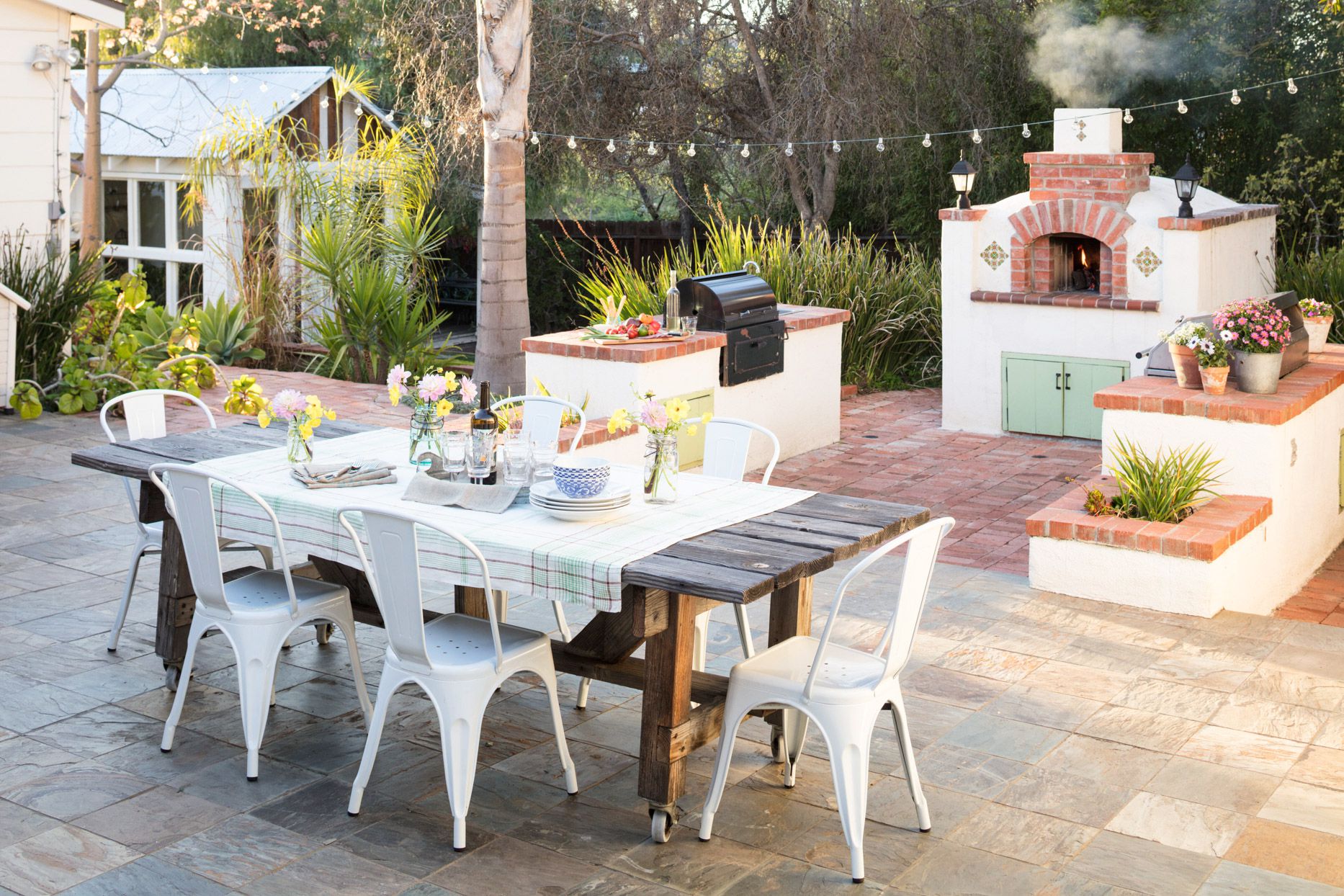Renovate your backyard for grilling, dining and relaxing with a functional outdoor kitchen. Invest in durable materials that stand up to harsh weather.
Keep in mind that running lines for water, electricity and gas can add up. If you can, choose a spot that’s close to your house to minimize costs.
Costs
The cost of an outdoor kitchen depends on how large and comprehensive a design you create, how much material is used and whether you need to install utilities. Utilities can add significant costs to the project and often involve laying utility lines that run underground to your kitchen. A sink needs a water line, a refrigerator will need electricity and a grill might require a natural gas line.
Building permits can also be costly, and a contractor will typically need to get these for you before construction begins. Obtaining a permit and a certificate of occupancy is a good idea to ensure that your project adheres to local building codes.
Some homeowners take on smaller backyard projects themselves to save money. But it’s important to hire a qualified general contractor who can recommend quality materials and follow building code standards. The wrong builder can tack on hidden expenses or make decisions that affect your budget. For instance, a builder who doesn’t plan properly or doesn’t stick to a timeline could cause you to overspend and ultimately spend more than you want to.
Design
A remodeler can help a client with an outdoor kitchen design that makes sense for the space. They can also offer ideas for layouts and appliances, based on the client’s cooking, dining and entertainment needs.
It’s important to consider all the details of the kitchen, from a work triangle to counter space and refrigeration. It’s also worth addressing any structures that can protect the space from weather, such as a gazebo or pergola.
Another way to add more style to a kitchen is with décor. Sweeten contractors recommend incorporating items that can withstand exposure to the elements, such as weatherproof cushions or chairs, and furniture paints.
Small details like napkin holders and utensil storage jars can add a pop of color to a space. Larger touches include floor or wall tiles, cabinets and shelves. They can be as simple or as complicated as the client wants. A client can hang a chandelier, for instance, or choose a natural toned wood such as the one used in this kitchen from New Eco Landscapes.
Materials
Adding an overhead structure increases your budget, but it protects the appliances and countertops from rain and prolongs their life. Options include a gazebo or pavilion-style roof and a slatted back wall.
A concrete block frame provides a sturdy base for your kitchen and can be faced with decorative concrete panels, stucco, tile or stone. Brick is another durable option for a kitchen and can be built directly into the frame or used as cladding.
Marble, quartz and granite are beautiful choices for countertop materials, but they can be expensive. Wood and laminate countertops are less expensive, but they can warp or rot in hot, humid weather.
An alternative to natural stone is soapstone, which adds a unique look and resists bacteria growth. It’s non-porous and requires regular sealing, but it’s a good choice for outdoor cooking because it’s heat resistant and doesn’t stain from spilled food. Another good option is stainless steel, which offers durability and a modern style. It’s also not porous and is easy to clean. It holds up well to extreme temperatures, but it’s best positioned away from direct sunlight.
Appliances
There are a wide range of appliances available to outfit an outdoor kitchen. Popular options include grills, smokers and pizza ovens. These can be used to create delicious meals for family and friends. They can also be a fun way to experiment with gourmet recipes.
Counters and prep space are essential for any outdoor kitchen. They should be made of weather-resistant materials such as granite or concrete. They should also be large enough to accommodate several cooks. A bar or counter seating area can help to make an outdoor kitchen feel more welcoming and informal.
Lighting is an important aspect of any outdoor kitchen remodel. It can highlight architectural features such as a stone backsplash or water feature. Ambient lighting is also a good choice. String lights, lanterns and sconces are all popular choices.
It is a good idea to install GFCI outlets in your outdoor kitchen. This will prevent electrical shocks and ensure that your appliances are safe to use. You may also want to add a dedicated outdoor sink to your kitchen. It will make it easier to clean up after cooking and drinking outdoors.
Lighting
If you’re planning an outdoor kitchen, you’ll need to carefully consider the lighting. Ideally, areas such as cooking and prep spaces need to be well-lit so you can see what you’re doing, while dining and seating areas need less direct light.
Ambient lighting is important, too. It sets a mood and creates an inviting space. String lighting, which is easy to install and comes in a variety of colors, is one option. Patio lights, which are rated for outdoor use, offer another solution. They can be mounted over countertops and islands to provide ambient lighting that also adds a beautiful design element.
Tiki torches are another fun way to add some style to your outdoor kitchen. However, it’s important to remember that they don’t provide much lighting and they can pose a fire risk. Working with a professional will help ensure that your lighting plan is both functional and aesthetically pleasing. They’ll also be able to help you understand local codes and permits, which may be necessary for your project. Choosing fixtures that are rated for outdoor use will help protect your investment and ensure that they stand up to the elements.









